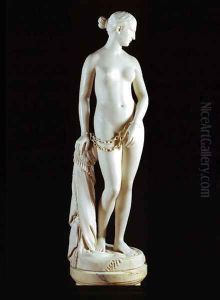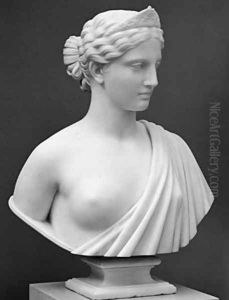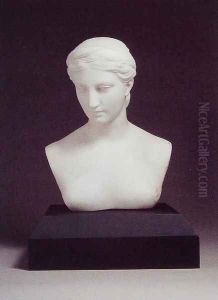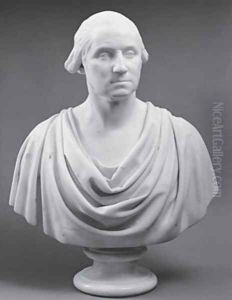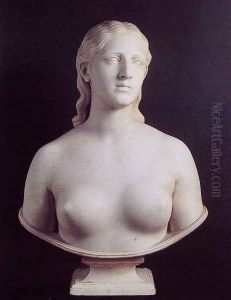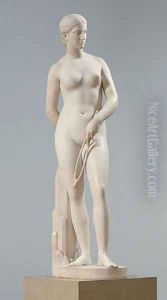Hiram Powers Paintings
Hiram Powers was an American neoclassical sculptor, recognized as one of the most prominent figures in the American art scene of the 19th century. Born on June 29, 1805, in Woodstock, Vermont, Powers grew up in a family that faced financial difficulties, which led them to move to Ohio when he was a child. Despite the early challenges, Powers showed a keen interest in art, particularly in sculpture, from a young age. His initial foray into the art world was through work at a clock-making and portrait modeling business in Cincinnati, where he learned the basics of sculpting.
Powers's talent soon caught the attention of local patrons who supported his move to Washington, D.C., in 1834. There, he achieved recognition for his portrait busts of prominent American figures, which showcased his remarkable skill in capturing likeness and expression. This success encouraged him to move to Italy in 1837, settling in Florence, a city that was then a hub for neoclassical sculpture. Italy offered Powers access to classical art and the vibrant community of American and European artists and patrons. It was in Florence that he created some of his most celebrated works, including the iconic statue 'The Greek Slave' (1844), which became one of the first American artworks to gain international fame. The statue, epitomizing the neoclassical ideal of beauty combined with a theme of liberation, was exhibited in major cities across Europe and America, earning Powers widespread acclaim.
Throughout his career, Powers remained committed to the neoclassical style, focusing on idealized forms and subjects drawn from history, mythology, and religion. His work was characterized by a meticulous attention to detail and a profound understanding of human anatomy, qualities that set his sculptures apart from those of his contemporaries. Despite living in Italy for most of his career, Powers maintained strong ties to the United States and continued to receive commissions from American patrons, including works for the U.S. Capitol.
Hiram Powers passed away on June 27, 1873, in Florence. His legacy is preserved in numerous collections and museums around the world, including the Smithsonian American Art Museum, the Metropolitan Museum of Art, and the National Gallery of Art in Washington, D.C. Powers's contributions to neoclassical sculpture and American art have been celebrated for their technical mastery and emotional depth, securing his place as a pivotal figure in the history of American sculpture.
